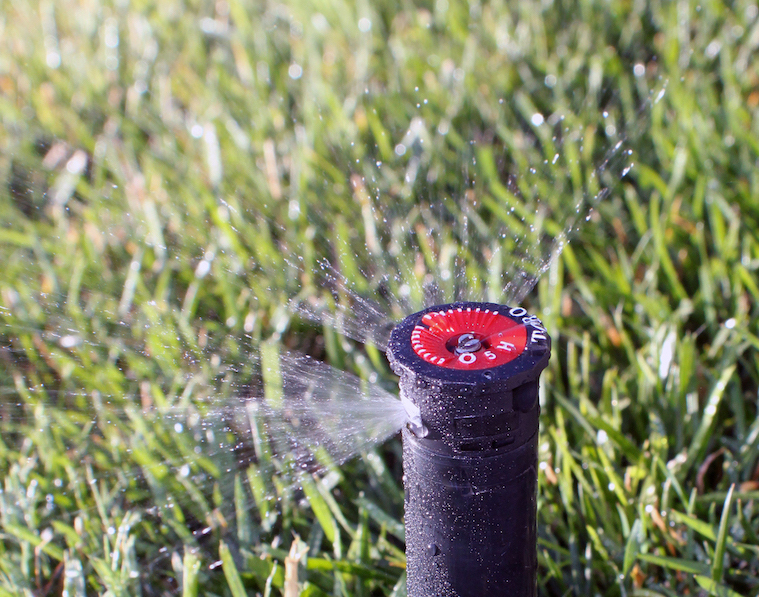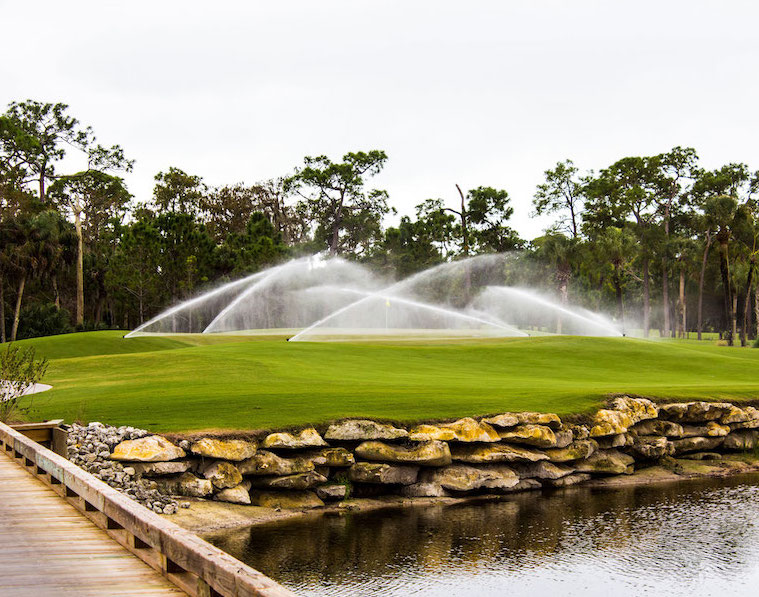Roadmap to Committing to Responsible Irrigation Practices

Global environmental concerns have become a trending topic of conversation in the turf and landscaping industry – and rightfully so. The effects of overusing natural resources are more evident than ever before, proving discussions around conservation are vital. Environmental changes are affecting landscapers and sports field managers alike, and in a variety of ways. Landscaping resources are scarce and climate change is here, forcing the industry to adapt by altering landscape designs, vegetation choices, and irrigation systems.
When choosing modern irrigation systems, efficiency is a high priority. Most newer systems excel at conserving water and are designed only to use water when necessary — a large upgrade from past irrigation systems. The efficiency of irrigation systems is a growing concern as government regulations increase worldwide, and the cost of water continues to rise in many regions. To be efficient with water, protect our natural resources and ensure healthier turf, mandates and system audits are a necessary part of the solution.
Modern and sustainable practices are very attainable, but first it’s crucial to understand what makes a system sustainable. Newer systems can help conserve water, save money, and benefit the environment. There are many ways to ensure your irrigation systems are meeting the standards of a sustainable irrigation practice.
According to John McPhee, general manager for Toro’s Irrigation and Lighting Businesses, adopting a sustainable irrigation system will result in landscapes requiring less maintenance and the turf lasting longer. Additionally, the landscape will require less water, with reduced runoff and puddling. A sustainable landscape also requires cutting down on fertilizer and pesticide usage.

Sustainable products to help save water
There are several products available that help conserve water, better protect the environment, and, over time, save turfgrass managers money.
Smart controllers
Irrigation smart controllers use the weather to automatically set watering schedules and runtimes, taking the guesswork out of watering. They make sure only the necessary amount of water is used on any given day.
Soil moisture sensors
Similar to smart controllers, irrigation system sensors control the amount of water used by detecting how much water is in the soil. Sensors can work in tandem with smart controllers by sending a signal to the controller that limits irrigation based on the moisture levels.
Sprinkler spray bodies
Sprinkler spray bodies with pressure regulation control the water pressure output and eliminate the fine water droplets that normally get blown away in the wind. Therefore, more water reaches the desired location, making the system itself more efficient.
High-efficiency spray nozzles
Smart irrigation nozzles help you save up to 35 percent of water as compared to regular spray nozzles. They eliminate water runoff, reduce water waste, and save money over time.
Water conservation foundations and programs
Many organizations understand the need to grow sustainability efforts within the turfgrass industry to enrich the beauty and productivity of the land for years to come, and are creating sustainable solutions for the irrigation industry.
Wyland Foundation
The Wyland Foundation brings people together through educational programs, community events, and public arts projects to support clean water sources and healthy oceans.
Irrigation Association
The Irrigation Association holds a yearly trade show that offers students learning opportunities pertaining to irrigation, product innovations, sustainability, and water conservation in the irrigation industry.
EPA WaterSense Program
The U.S. Environmental Protection Agency (EPA) WaterSense Program works to ensure certified irrigation products meet the program’s water use efficiency standards. The program also promotes sustainability through community water conservation and efficiency.
“The Water Zone”
Sponsored and produced by Toro, “The Water Zone” radio program aims to help educate the public on best practices for outdoor water use, and the latest updates in smart irrigation technologies and government and municipal policy. What started out as a local broadcast to approximately 5 million people in Southern California, has turned into a broadcast that can now be listened to on mobile devices via “iHeart Radio’. To expand the show’s reach even further, the show is available on podcast. The award-winning show continues to be a strong force in building water conservation awareness.
Future of sustainability in irrigation
The future is promising for sustainable landscaping and water conservation, especially within the irrigation industry.
“The future of landscape architecture will demand that we use our knowledge of living systems and nature-driven designs to reduce the use of natural resources while creating spaces of value and beauty for all of mankind,” said McPhee.
Field and grounds managers will continue to drive water conservation efforts forward and may see the need to implement new technologies to help meet their bottom lines and sustainability goals. Additionally, more stringent government regulations of natural resources are necessary to preserve spaces of value and beauty. When we work together, we can positively impact sustainability and water conservation efforts.
Article provided by Toro



